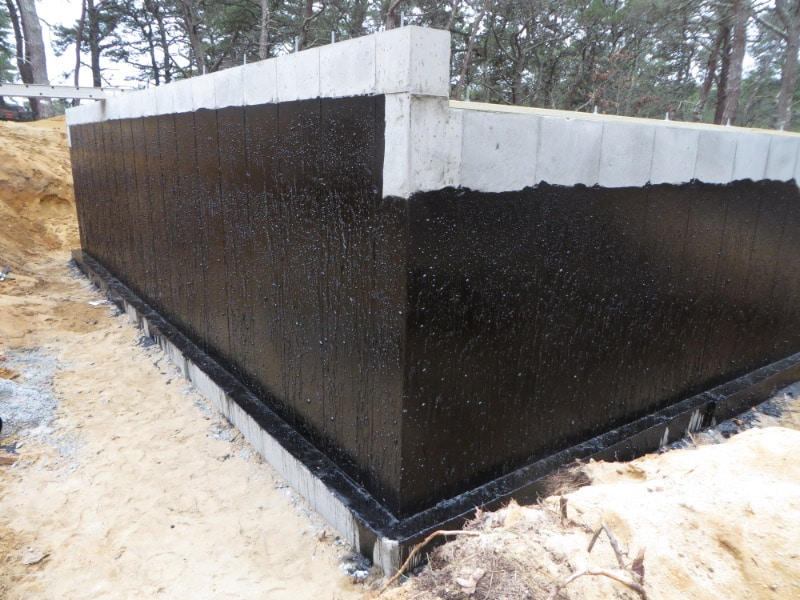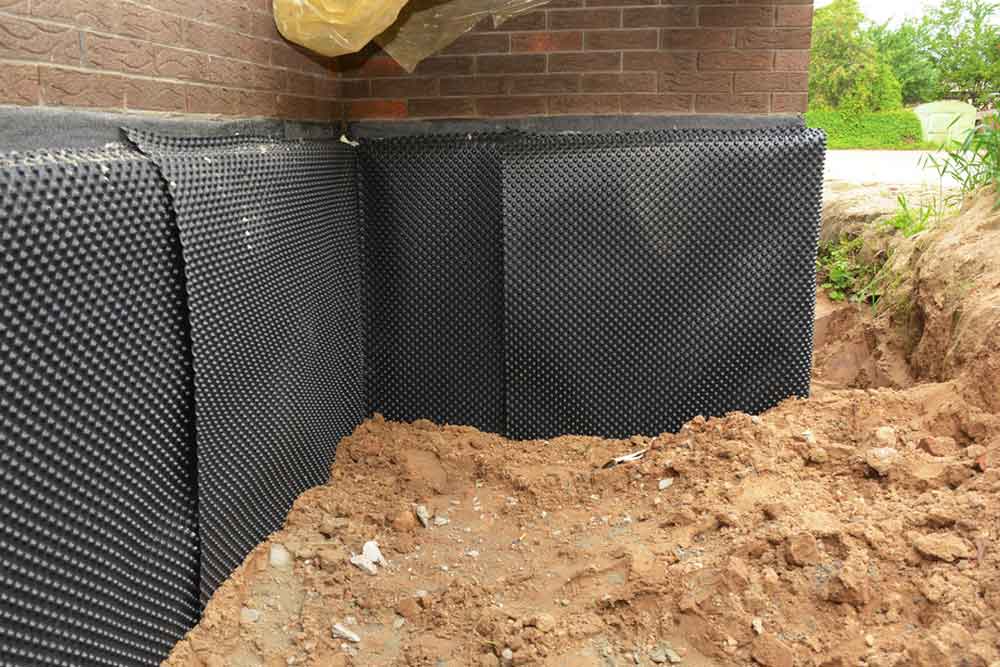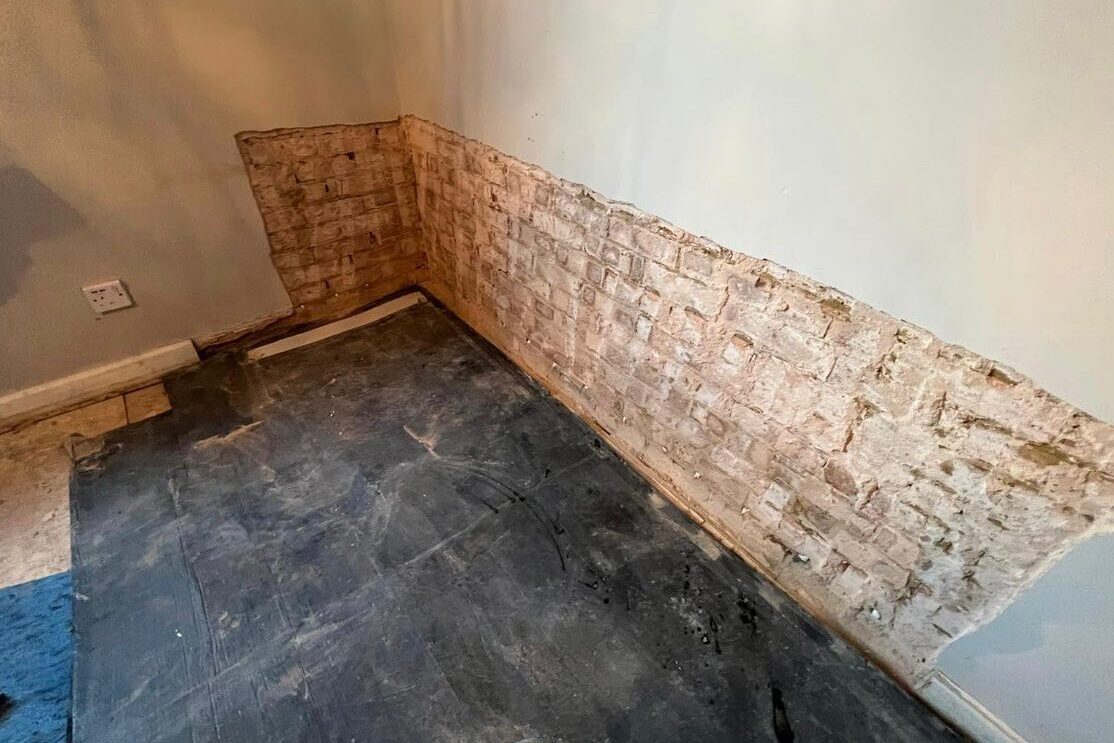Exploring the Different Strategies and Solutions for Effective Damp Proofing
Dampness in structures positions considerable obstacles to both structural integrity and interior air top quality. Various methods and remedies have actually emerged to combat this pervasive problem. From typical damp-proof membranes to cutting-edge chemical therapies, each approach offers distinct advantages. Comprehending these options is necessary for reliable moisture control. However, picking the right option relies on details building conditions and demands, triggering more expedition right into the most effective damp proofing techniques readily available.
Recognizing the Reasons For Dampness
Although dampness can arise from numerous sources, understanding these reasons is essential for efficient removal. Frequently, dampness stems from 3 primary resources: rising moist, permeating damp, and condensation. Climbing damp takes place when groundwater travels up with permeable products, such as brick or rock, usually because of a lack of a reliable barrier (mould removal newcastle). Penetrating moist is typically created by external aspects, including roofing leaks, malfunctioning seamless gutters, or damaged wall surfaces, permitting water to infiltrate a residential or commercial property. Condensation, on the various other hand, results from excess moisture airborne, usually intensified by inadequate ventilation and temperature distinctions, leading to water droplets developing on surface areas. Identifying these underlying problems is necessary, as each sort of moisture requires a customized technique for removal. Correct evaluation aids in determining one of the most effective options, eventually safeguarding the architectural integrity of a structure and boosting indoor air high quality
Standard Damp-Proof Membrane Layers

Chemical Damp-Proofing Solutions
Chemical damp-proofing remedies provide a cutting-edge technique to preventing dampness invasion in buildings. These techniques generally entail the application of liquid chemicals that permeate stonework and form an obstacle against climbing wet. Frequently used chemicals consist of silanes, siloxanes, and other water-repellent agents that respond with surface area materials to produce a hydrophobic layer.The application procedure typically calls for drilling holes right into the walls, injecting the chemical solution, and allowing it to treat. This method is specifically useful for older frameworks where standard damp-proof membranes might be not practical. Chemical damp-proofing can be less disruptive and more cost-efficient than considerable improvement projects.While effective, these solutions depend on proper application and environmental conditions for peak performance. mould removal newcastle. Routine maintenance and tracking are necessary to assure the long life of the damp-proofing therapy. Overall, chemical damp-proofing represents a versatile alternative for guarding structures against moisture-related damage
Cavity Wall Surface Building Methods
Tooth cavity wall building and construction methods provide various benefits, specifically in dampness control and energy efficiency. By including an air space between 2 layers of masonry, these wall surfaces effectively minimize water access while enhancing insulation. This mix not only protects frameworks from dampness yet likewise adds to reduced power usage.
Advantages of Tooth Cavity Walls
When thinking about effective damp proofing techniques, the advantages of tooth cavity walls stick out prominently. Dental caries walls include 2 separate layers, developing an air gap that properly decreases dampness penetration. This layout lessens the threat of wetness, as the external wall surface acts as an obstacle versus rain and water ingress. Furthermore, tooth cavity walls enhance thermal insulation, which adds to power efficiency by reducing heat loss. They also give sound insulation, assisting to produce a quieter interior environment. The air void allows for ventilation, which aids in moisture control and decreases the probability of mold and mildew development. These advantages not only enhance the general convenience of a structure however additionally add to its longevity and structural stability.
Moisture Control Methods
Efficient moisture control strategies are critical in dental caries wall surface construction to ensure long-lasting defense against wetness. One main method entails the consolidation of weep holes, which assist in water drainage from the tooth cavity, preventing buildup. Additionally, making use of breathable membranes can aid handle dampness levels while permitting entraped vapor to escape. Appropriate positioning of insulation is likewise vital, as it should not obstruct water drainage paths. Ensuring that the outer leaves of the tooth cavity wall surface are constructed with water-resistant materials improves total durability. Routine upkeep checks are vital to identify any kind of blockages or damage early, securing the framework's honesty. Inevitably, a mix of these strategies forms a durable protection versus dampness breach in dental caries wall surfaces.
Insulation and Power Effectiveness
Insulation plays an important role in improving energy effectiveness within tooth cavity wall building and construction. By incorporating insulating materials, these wall surfaces create a thermal obstacle that minimizes heat loss and reduces energy consumption. Reliable insulation not just aids preserve a get more info secure interior temperature level however also minimizes the threat of moisture, as it stops condensation within the wall cavity. Different methods, such as making use of rigid foam boards or mineral wool, can be employed to achieve suitable insulation efficiency. Additionally, appropriate setup is vital to assure that voids and voids are lessened, which can otherwise compromise power effectiveness. Ultimately, a well-insulated dental caries wall adds greatly to total sustainability and reduces heating & cooling prices for property owners.
Exterior Damp Proofing Techniques
External wet proofing approaches are important for protecting structures from dampness infiltration. Two reliable methods consist of the application of water resistant membranes and the installment of French drains. These remedies assist minimize water build-up and maintain the stability of structures.
Waterproof Membrane Application
While numerous approaches exist for stopping dampness ingress, the application of water-proof membranes stays a very effective outside damp proofing method. These membrane layers are typically made from products such as polyethylene, rubber, or modified bitumen, giving a robust barrier against water infiltration. The installation process includes using the membrane layer to the external surface areas of walls or foundations, making certain total insurance coverage to stop leakages. Appropriate adhesion and sealing at joints are vital to making best use of performance. Waterproof membranes can be used in various forms, including fluid coverings and sheet membranes, permitting adaptability based on the certain needs of the framework. This technique not just shields buildings from wetness however additionally improves their durability and architectural integrity.
French Drainpipe Installment
One effective method for taking care of groundwater and stopping moisture buildup around a structure's foundation is the setup of a French drain. This drain system includes a trench filled with crushed rock and a perforated pipeline that redirects surface water far from the foundation. Proper installation requires careful preparation, ensuring that the drain inclines far from the framework to promote ideal water flow. Additionally, the location of the drain is important; it should be positioned in locations vulnerable to pooling or excess moisture. Normal maintenance, including cleaning debris from the crushed rock and making certain the pipeline stays unobstructed, is important for long-lasting effectiveness. Eventually, a well-installed French drain can significantly decrease the risk of water-related issues in basements and structures.
Interior Waterproofing Techniques
Inside waterproofing techniques are essential for securing a structure's inside from wetness infiltration and possible water damage. These approaches normally involve the application of specific materials and methods made to develop a wetness obstacle within the framework. One common strategy is using waterproof layers or sealants on wall surfaces and floors, which protect against moisture from passing through surfaces.Additionally, installing indoor drainage systems, such as sump pumps, can properly handle water buildup in basements and creep spaces. An additional technique includes the usage of vapor barriers, which are mounted to inhibit dampness motion from the ground right into living spaces.Moreover, attending to any fractures or spaces in walls or foundations with suitable sealants assures a complete defense against water breach. By executing these interior waterproofing strategies, homeowner can significantly minimize the danger of mold growth, architectural damage, and various other moisture-related problems. Proper implementation of these techniques is important for lasting security and structure integrity.
Routine Upkeep and Inspection Practices
Regular upkeep and examination techniques are essential for assuring the long-lasting performance of moist proofing services in any type of building. Routine checks make it possible for homeowner to recognize very early indicators of wetness invasion, such as peeling paint, mold development, and mildewy smells. These indications can indicate underlying problems that need immediate attention.Inspections ought to be carried out at the very least annually, focusing on prone areas like cellars, creep rooms, and outside wall surfaces. During these assessments, homeowner should check out sealants, water drainage systems, and ventilation to validate they work correctly.Additionally, preserving rain gutters and downspouts is essential, as blocked systems can result in water accumulation near the structure. Implementing a normal upkeep routine, together with prompt repair work, can significantly expand the lifespan of damp proofing steps and shield the structural honesty of the building. Positive procedures ultimately add to the total health and security of the living setting.
Frequently Asked Concerns
Just How Long Does Damp Proofing Typically Last?
The period of damp proofing performance varies, commonly lasting between 20 to half a century. Factors such as application high quality, ecological problems, and maintenance methods substantially influence the long life of the wet proofing treatment.

Can I Damp Proof My Home Myself?
The individual pondered the usefulness of do it yourself damp proofing. With appropriate research study and the best materials, it is feasible. Nonetheless, they additionally acknowledged the significance of professional assistance to ensure lasting effectiveness and avoid future problems.
What Are the Signs of Inefficient Damp Proofing?
Signs of inadequate moist proofing include consistent stuffy odors, visible mold and mildew growth, peeling off paint, wet patches on walls, and timber degeneration - mould removal newcastle. Property owners should resolve these problems promptly to stop additional damage and health and wellness concerns
Does Damp Proofing Affect Indoor Air Top Quality?

How Much Does Specialist Damp Proofing Cost?
Professional moist proofing prices vary significantly, usually ranging from $1,000 to $5,000 relying on the building's size, the degree of the wet concern, and chosen techniques. Each scenario calls for a tailored analysis for precise pricing. Generally, moisture originates from three key resources: rising moist, permeating wet, and condensation. When considering efficient moist proofing techniques, the benefits of cavity walls stand out prominently. Outside wet proofing approaches are important for shielding structures from moisture infiltration. While different techniques exist for protecting against moisture access, the application of water resistant membrane layers continues to be a very reliable exterior wet proofing strategy. Indicators of inadequate wet proofing consist of relentless musty smells, noticeable mold and mildew development, peeling off paint, wet patches on walls, and wood decay.